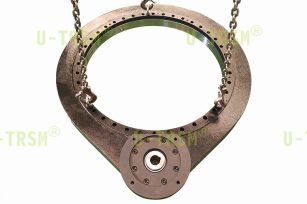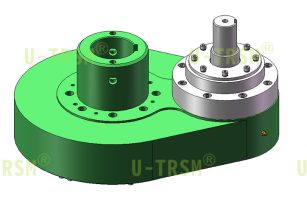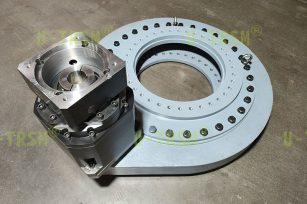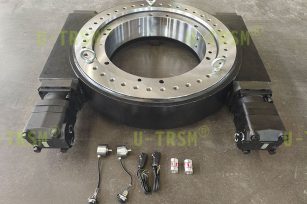Latest Products
We keep on updating and iterating our products, optimizing the structural design and creating a more scientific and reliable slewing drive device.
-
 Selection and characteristics of slewing d...
Selection and characteristics of slewing d...This slewing drive is used in automated mixing equipment. The customer requires that it rotate in the same direction ...
Detailed instructions Send mail -
 Analysis of the high speed rotating double...
Analysis of the high speed rotating double...This double row ball gear type slew drive is used in automation equipment. The customer requires ultra-high speed ope...
Detailed instructions Send mail -
 30855 slew drive assembly: precise protect...
30855 slew drive assembly: precise protect...Introduction In the field of industrial transmission, U-TRSM has always been a leader in innovation, committed...
Detailed instructions Send mail -
 High load slewing drive solution for deep ...
High load slewing drive solution for deep ...This slewing drive is used in marine machinery and equipment, suitable for underwater locations at depths of up to 30...
Detailed instructions Send mail
Deformation control of slewing drive housing casting
Publish time:2023/12/16 News Views:213
When designing slewing drive products, U-TRSM design engineers often encounter non-standard designs, such as casting the housing and the equipment base as one piece, extending the housing outside to increase the location of the mounting holes and other ways. So in the housing casting, the reasonable design of wall thickness, bottom plate, rib plate thickness and other dimensions is particularly important. Proper design can greatly reduce weight and cost. The non-standard housing casting method usually adopts sand casting, and its deformation control method is probably achieved by the following methods:
1. Optimisation of mould design: When designing a mould, the amount of shrinkage and deformation during its casting process should be taken into account.
2. Optimisation of the casting process: In the casting process, the various casting process parameters (sand mold temperature, pouring temperature, cooling speed, etc.) should be strictly controlled to control the cooling shrinkage deformation of the castings.
3. Auxiliary support design: In the case of large or thin-walled designs, the addition or subtraction of auxiliary support structures (rib plates, support columns, etc.) can be considered to increase the rigidity and stability of the mould.
4. Optimisation of the casting structure: Reasonable and effective distribution of casting materials and weight.
5. Using correction equipment: For castings with deformation, equipment such as presses and correction machines can be used to restore the shape and size of the castings.
The deformation control of sand casting needs to consider a variety of factors, and in actual production, it is necessary to continuously accumulate experience and adjust process parameters to achieve the goal of deformation control.
- Advantages of using spline connection for ...
- What parts are made of the spur gear slewi...
- How does U-TRSM quickly and efficiently pr...
- Synergistic development of industrial robo...
- Why should the slew drive be filled with l...
- The importance of the difference between t...
- How to reduce the slewing bearing gear noise?
- Application Analysis Of Slewing Bearing In...










